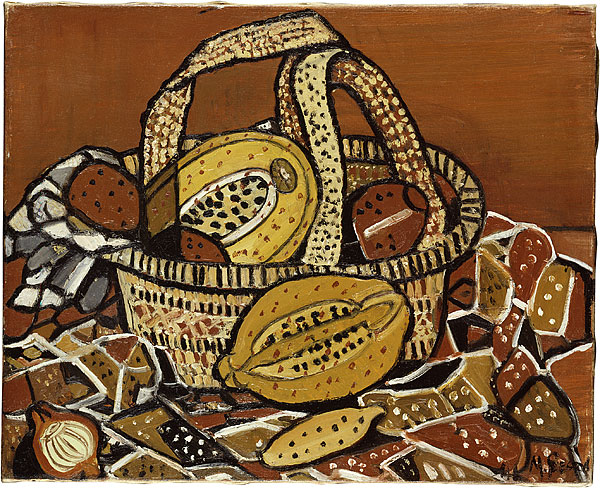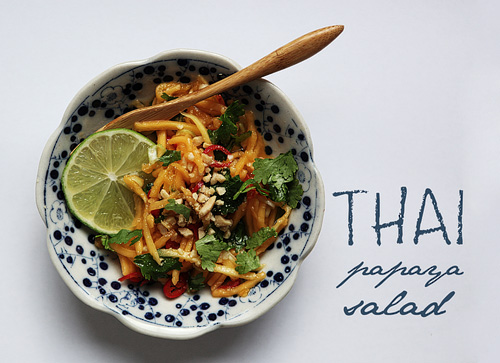The colour orange has always been one of warning used for it’s eye-catching qualities to delineate danger. The pigment was produced through a difficult process of grinding down madder, the pink root of a small bush. Madder is often used to make ‘rose madder genuine’ watercolor paint but when used as a dye, a rich shade of orange-red will emerge when a bit of alum is added to the bath (1). The dependence on the natural madder pigment did not end until 1869 when the specific chemical that causes the red-orange coloration was replicated in a formula. Over the past 30 years there has been a small revival within the industry to relearn the techniques associated with natural dye production.

From the 1920s onward, Margaret Preston became a well-known figure in Australia through her distinctive use of linocut and woodblock printing. She was inspired by the aesthetic styles of the Japanese, Chinese and primitive art forms of the Aboriginal communities in Australia. Preston created her compositions with large, flat planes of colour and a minimal palette. In Still life: fruit (Amhem Land motif) (1941) Preston looked to the ochre and black/white Tiwi artist palette and the dot/dash mark making technique of the native Aboriginals. The fruits and nuts were depicted as simplified forms, outlined with a thick application of white and black paint. The painting, while including many of the specific ingredients found in som tam (Thai papaya salad), is a complex painting made of a simple palette of colors. This complexity from simplicity is mirrored in the salad with the representation of the four major flavors of Thai cuisine, the sour lime, spicy heat from the chili, saltiness of the fish sauce and sweetness. Typically, green papaya is used but by swapping out the green fruit for a ripe orange one, the palm sugar is omitted and the natural sweetness of the fruit is highlighted. The small salad packs a lot of flavor and should be eaten gingerly, the red chilies are bracingly spicy.

Thai Papaya Salad
serves 2
1 large papaya
1 red chili, thinly sliced
1 spring onion, thinly sliced
small handful coriander, roughly chopped
10 salted peanuts, chopped
juice of 1 lime
1 TB fish sauce
Remove the soft flesh of the papaya until you are left with the semi-firm fruit near the rind. Using a julienne peeler, cut the papaya into long thin strips. Mix with the thinly sliced chili, spring onion and coriander.
In a small cup, mix the lime juice with the fish sauce. Drizzle the dressing over the salad and very carefully toss to combine.
Spoon the salad onto two small plates and cover with the chopped peanuts. Serve immediately or the fruit will become mushy.
………………………………………………..

6 comments
Katie @ Cozydelicious says:
Dec 6, 2010
This salad looks fantastic! I have always thought papaya is the most beautiful of fruits.
Julie says:
Dec 7, 2010
Many, many of your recipes contain coriander; I must say it adds a beautiful dash of lacy green.
deana says:
Dec 7, 2010
I think it’s very cool she translated a bright color palette into sepia… makes you look at the shapes differently. Your dish is glorious color… and looks every so tasty and light. I crave things like this as we go into the gray days of winter.
Rosa says:
Dec 7, 2010
Marvelous! It looks so beautiful. That is one of my favorite Thai salads.
Cheers,
Rosa
Hels says:
Dec 18, 2010
I think Margaret Preston was one of Australia’s most innovative artists. The golden and brown colours include the fruit, the basket, the table top, wall and every other item. Perfect :)
cookmarked.com says:
Jan 16, 2011
I bet a bit a tamarind would be a good sub for the fish sauce for the vegans among us. sounds delish!